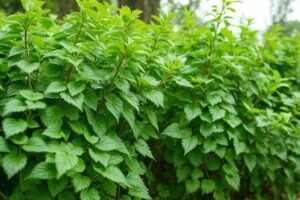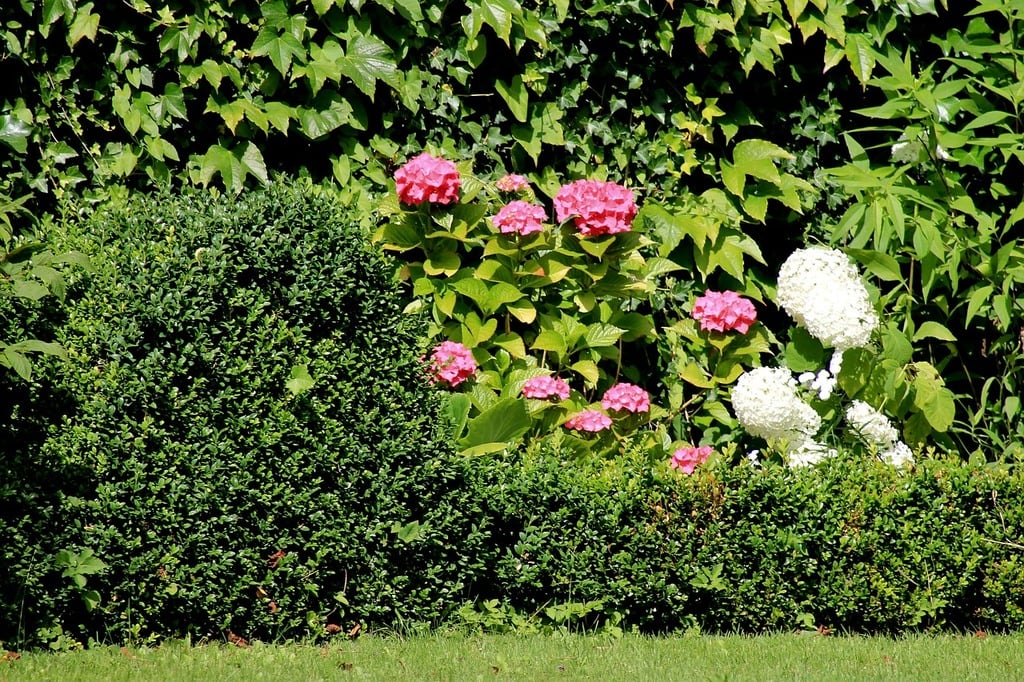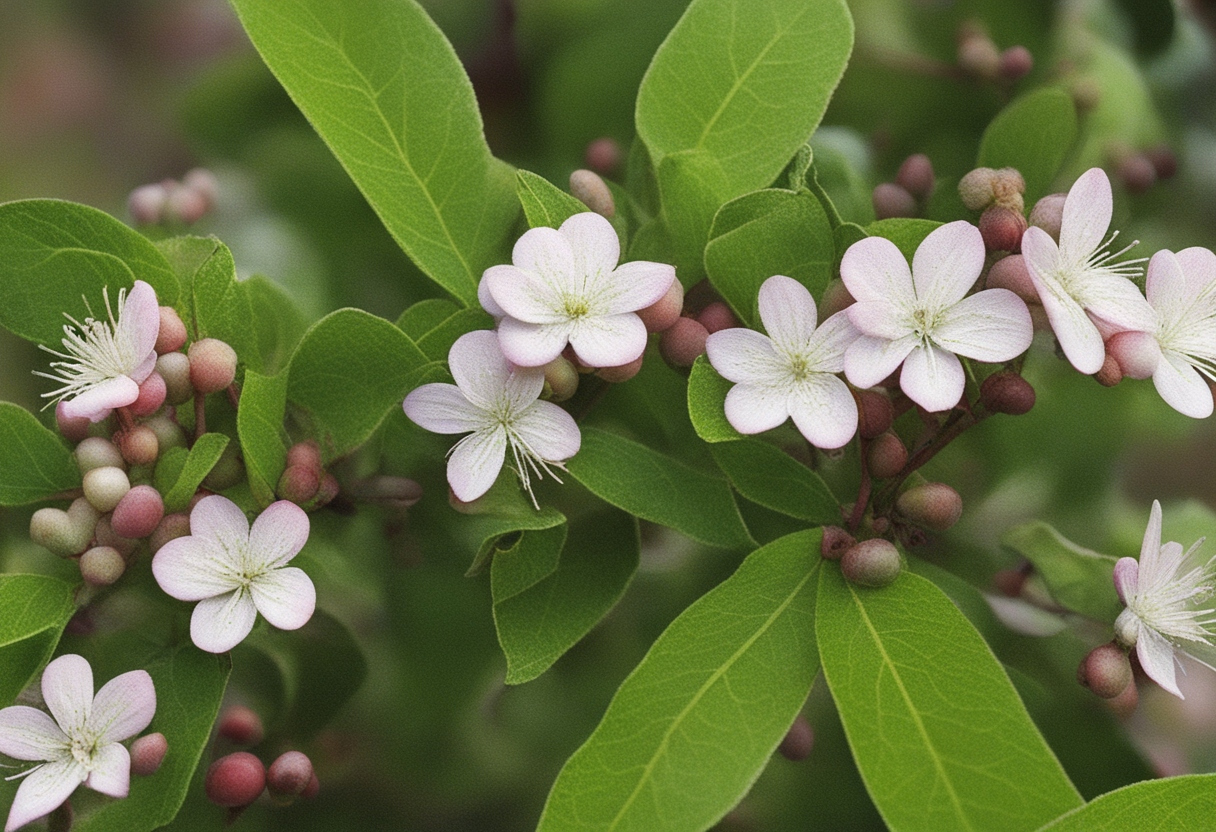Understanding the Effects of Winter Frost and Cold on Shrubs
Winter frost and cold temperatures can have a significant impact on the health and well-being of shrubs in your garden. As the mercury drops, so does the vitality of these plants, making them susceptible to various winter-related challenges. One of the most notable effects of frost and cold is the potential for freezing damage. When the temperature dips below freezing, plant cells can freeze and rupture, leading to irreversible harm. This can manifest in the form of blackened or discolored foliage, stunted growth, and even death in severe cases.
In addition to freezing damage, shrubs also face the risk of desiccation during the winter months. As the cold sets in, the air becomes drier, which can cause moisture to evaporate from the plant’s leaves and stems at an accelerated rate. This dehydration can weaken the shrubs, making them more susceptible to frost and other environmental stressors. Furthermore, winter frost can hinder the absorption of water and nutrients from the soil, further exacerbating the risk of desiccation. Understanding these effects of winter frost and cold on shrubs is crucial for implementing proper care and protective measures to minimize damage and ensure their survival.
• Freezing damage: When temperatures drop below freezing, plant cells can freeze and rupture, leading to irreversible harm. This can result in blackened or discolored foliage, stunted growth, and even death in severe cases.
• Desiccation risk: The cold air during winter causes moisture to evaporate from the shrub’s leaves and stems at a faster rate. This dehydration weakens the shrubs, making them more vulnerable to frost and other environmental stressors.
• Hindered water absorption: Winter frost can impede the shrub’s ability to absorb water and nutrients from the soil, increasing the risk of desiccation.
• Implementing proper care: Understanding these effects is crucial for implementing protective measures that minimize damage and ensure survival of shrubs during winter.
Identifying Vulnerable Shrubs in Your Garden
Gardening enthusiasts know that not all shrubs are created equal when it comes to facing the challenges of winter. Therefore, it is crucial to identify vulnerable shrubs in your garden in order to take appropriate measures to protect them from the harsh effects of the cold season. One way to identify vulnerable shrubs is by paying close attention to their hardiness zone rating. Each plant has a specific hardiness zone, which determines its ability to withstand certain minimum temperatures. By knowing the hardiness zone of your shrubs, you can determine whether they are susceptible to freezing temperatures or not.
Another way to identify vulnerable shrubs is by considering their overall health and condition. Shrubs that are already weakened or damaged are more likely to suffer from the stresses of winter. Look for signs of disease, pest infestation, or any physical damage on the shrubs. Additionally, observe how well they have performed in previous winters. If certain shrubs consistently show signs of distress or fail to survive winter, it is a clear indication that they are vulnerable and need extra care. By understanding which shrubs are more susceptible to winter damage, you can take specific measures to protect them and ensure their survival through the colder months.
• Pay close attention to the hardiness zone rating of your shrubs
• Determine if they can withstand certain minimum temperatures
• Look for signs of disease, pest infestation, or physical damage on the shrubs
• Consider their overall health and condition
• Observe how well they have performed in previous winters
• Take specific measures to protect vulnerable shrubs
• Ensure their survival through the colder months
Providing Adequate Watering and Nutrients for Winter Preparation
During the winter months, it is important to ensure that your shrubs are adequately hydrated and receive the necessary nutrients to prepare them for the harsh conditions ahead. While plants may not require as much water during this time compared to the warmer seasons, it is crucial to prevent them from drying out completely. Be sure to monitor the moisture levels in the soil and water your shrubs whenever it becomes excessively dry. This will help them retain some moisture and prevent dehydration, which can lead to winter damage. Additionally, consider providing a deep watering session before the ground freezes to ensure that the roots have enough water to sustain them throughout the winter.
In addition to proper watering, it is crucial to provide your shrubs with the necessary nutrients to survive the winter months. While fertilization should generally be avoided during this time, you can still incorporate organic matter into the soil to improve its quality and provide some essential nutrients. Adding a layer of compost or well-rotted manure around the base of your shrubs can help enrich the soil and promote healthy growth in the spring. Furthermore, consider using a slow-release organic fertilizer specifically designed for shrubs before the onset of winter. This will provide the necessary nutrients over an extended period, ensuring that your shrubs have the resources they need to withstand the cold temperatures and potential frost.
• Monitor the moisture levels in the soil and water shrubs when it becomes excessively dry
• Prevent dehydration by ensuring shrubs retain some moisture during winter months
• Provide a deep watering session before the ground freezes to sustain roots throughout winter
• Avoid fertilization during winter, but incorporate organic matter into soil for essential nutrients
• Add compost or well-rotted manure around base of shrubs to enrich soil and promote healthy growth in spring
• Consider using a slow-release organic fertilizer specifically designed for shrubs before winter onset
Mulching Techniques to Insulate Shrubs from Frost
As the winter frost sets in, it is crucial to protect your shrubs from the damaging effects of freezing temperatures. Mulching is an effective technique that can help insulate your shrubs and protect their delicate roots from the harsh cold. By applying a layer of organic mulch around the base of your shrubs, you create a barrier that prevents the soil from freezing and helps retain moisture. This added insulation not only protects your shrubs from frost, but it also helps regulate soil temperature, minimizing the stress on the plants during winter.
When it comes to choosing the right mulch for your shrubs, there are several options to consider. Organic materials such as straw, wood chips, or shredded leaves work well as they gradually break down, releasing nutrients into the soil. These materials also create air pockets that further insulate the soil. It is important to apply the mulch in a layer that is about two to three inches thick, making sure to leave a small gap around the base of the shrub to prevent rotting. Applying mulch before the ground freezes is essential as it allows the shrubs to acclimate gradually to the cold temperatures. Remember to remove any weeds or debris before mulching to ensure optimal protection for your shrubs throughout the winter season.
• Organic materials such as straw, wood chips, or shredded leaves are effective mulching options
• Mulch gradually breaks down and releases nutrients into the soil
• Mulch creates air pockets that further insulate the soil
• Apply a layer of mulch that is about two to three inches thick
• Leave a small gap around the base of the shrub to prevent rotting
• Apply mulch before the ground freezes to allow shrubs to acclimate gradually
• Remove any weeds or debris before applying mulch for optimal protection
Choosing the Right Protective Coverings for Shrubs
Choosing the right protective coverings for shrubs is an essential step in safeguarding them from the harsh winter conditions. When selecting coverings, it is crucial to consider the size and shape of the shrubs, as well as their specific needs. One popular option is burlap, which provides a breathable barrier that protects against cold winds while allowing some light to reach the plants. Another option is frost cloth, which is lightweight and allows for better air circulation. Both burlap and frost cloth should be securely fastened around the shrubs to prevent them from blowing off in strong winds.
For smaller shrubs or delicate varieties, individual covers such as plastic cones or wire cages can be used. These offer excellent protection against freezing temperatures and heavy snowfall. However, it is important to ensure that these covers are removed once the worst of the winter weather has passed to avoid trapping excess moisture, which can lead to rot or disease. Additionally, it is worth noting that protective coverings should only be used on shrubs that are vulnerable to winter damage, as some hardy varieties may not require this level of protection. By selecting the appropriate coverings, gardeners can help their shrubs survive the winter months and thrive once spring arrives.
• Burlap is a popular option for protective coverings as it provides a breathable barrier and allows some light to reach the plants.
• Frost cloth is another option that is lightweight and allows for better air circulation.
• Both burlap and frost cloth should be securely fastened around shrubs to prevent them from blowing off in strong winds.
• For smaller shrubs or delicate varieties, individual covers such as plastic cones or wire cages can be used.
• Plastic cones and wire cages offer excellent protection against freezing temperatures and heavy snowfall.
• It’s important to remove these covers once the worst of the winter weather has passed to avoid trapping excess moisture which can lead to rot or disease.
• Protective coverings should only be used on shrubs that are vulnerable to winter damage, as hardy varieties may not require this level of protection.
Implementing Proper Pruning Practices to Minimize Winter Damage
Pruning your shrubs before winter sets in is an essential step in minimizing potential damage caused by the cold weather. The first step in this process is to remove any dead or diseased branches from the shrub. These branches are not only unsightly, but they can also attract pests and diseases that may cause further harm to the shrub during the winter months. Additionally, pruning helps to improve air circulation and sunlight penetration, which are crucial for the overall health and well-being of the shrub. By removing any excess branches and maintaining a balanced shape, you are ensuring that the shrub can withstand the harshness of winter and thrive come springtime.
When pruning your shrubs for winter preparation, it’s important to avoid excessive pruning. While it may be tempting to trim back the shrub significantly, doing so can actually weaken the plant and make it more susceptible to frost damage. Instead, focus on removing any damaged or crossed branches that may hinder the shrub’s growth. It’s also important to prune at the right time, typically during the late fall or early winter, when the shrub is in its dormant state. This allows the shrub to heal properly before the freezing temperatures arrive. By following these proper pruning practices, you can minimize winter damage and ensure the overall health and longevity of your shrubs.
• Removing dead or diseased branches is essential to prevent further harm during winter
• Pruning improves air circulation and sunlight penetration for the shrub’s health
• Maintaining a balanced shape helps the shrub withstand harsh winter conditions
• Avoid excessive pruning as it weakens the plant and increases vulnerability to frost damage
• Focus on removing damaged or crossed branches that hinder growth instead
• Prune during late fall or early winter when the shrub is dormant for proper healing
• Proper pruning practices minimize winter damage and promote overall shrub health
Creating Windbreaks to Shield Shrubs from Cold Temperatures
Windbreaks can be an effective way to provide protection for shrubs from the cold temperatures of winter. By strategically placing barriers, such as fences or hedges, around shrubs, you can create a sheltered area that reduces the impact of harsh winds. These windbreaks act as a barrier, blocking the blunt force of the cold air and preventing it from directly hitting the shrubs. This helps to maintain a more consistent and moderate temperature around the plants, reducing the risk of damage caused by extreme cold.
When creating windbreaks, it is important to consider the direction of prevailing winds in your area. By placing the barriers on the windward side of the shrubs, you can ensure that they provide optimal protection. Additionally, the height and density of the windbreaks should be carefully chosen. Taller and denser barriers offer greater protection, but they should not completely eliminate air movement as this can lead to excessive humidity or stagnant air. It is also important to regularly inspect and maintain the windbreaks to ensure they remain effective throughout the winter season.
• Windbreaks act as a barrier, blocking the blunt force of cold air and preventing direct impact on shrubs.
• They create a sheltered area that reduces the impact of harsh winds and maintains a more consistent temperature.
• Prevailing wind direction should be considered when placing windbreaks for optimal protection.
• The height and density of windbreaks should be carefully chosen to offer adequate protection without eliminating air movement completely.
• Regular inspection and maintenance of windbreaks is important to ensure their effectiveness throughout winter.
Using Anti-desiccant Sprays to Protect Shrubs from Winter Dehydration
During the winter months, shrubs can often experience dehydration due to the dry and cold conditions. This can lead to wilting, yellowing of leaves, and even dieback. To protect your shrubs from winter dehydration, one effective method is to use anti-desiccant sprays. These sprays, also known as anti-transpirants, create a thin, protective coating on the leaves and stems of the shrubs, reducing water loss through transpiration.
Anti-desiccant sprays work by forming a film that helps to seal in moisture and protect the shrubs from the drying effects of cold winds and low humidity. They are particularly beneficial for evergreen shrubs, which are more susceptible to winter dehydration. Applying the spray in late fall, before the onset of freezing temperatures, can provide long-lasting protection throughout the winter months. It is important to follow the manufacturer’s instructions for application, as each spray may have specific guidelines regarding timing and frequency. By using anti-desiccant sprays, you can help ensure that your shrubs stay hydrated and healthy during the winter season.
• Anti-desiccant sprays, also known as anti-transpirants, are effective in protecting shrubs from winter dehydration.
• These sprays create a thin, protective coating on the leaves and stems of shrubs, reducing water loss through transpiration.
• They work by forming a film that seals in moisture and protects against the drying effects of cold winds and low humidity.
• Evergreen shrubs are particularly susceptible to winter dehydration and can benefit greatly from using anti-desiccant sprays.
• Applying the spray in late fall before freezing temperatures set in provides long-lasting protection throughout the winter months.
• It is important to follow the manufacturer’s instructions for application, including timing and frequency.
Monitoring and Adjusting Irrigation Practices During Winter
During the winter months, it is crucial to monitor and adjust irrigation practices to ensure the health and survival of your shrubs. Most shrubs become dormant in winter and require less moisture than during the active growing season. Over-irrigation can lead to waterlogged roots, promoting the growth of root rot and other diseases. On the other hand, inadequate watering can leave the shrubs susceptible to dehydration, especially during dry spells or windy conditions.
To effectively monitor irrigation, observe your shrubs regularly and pay attention to their moisture levels. Check the soil around the root zone by inserting your finger or a moisture meter into the ground. If the soil feels damp up to a depth of about 2-3 inches, there is usually enough moisture. However, if it feels dry beyond this depth, it’s an indication that the shrubs might need watering. Additionally, observe the appearance of the shrubs, looking for signs of wilting or droopy leaves, which could also indicate low moisture levels. By adjusting the irrigation accordingly, you can conserve water and protect your shrubs from both dehydration and waterlogged conditions.
• Regularly observe shrubs and check soil moisture levels
• Insert finger or moisture meter into the ground to determine dampness
• If soil feels dry beyond 2-3 inches, shrubs may need watering
• Look for signs of wilting or droopy leaves as indicators of low moisture levels
• Adjust irrigation practices accordingly to conserve water and protect shrubs from dehydration and waterlogged conditions
Assessing and Addressing Winter Damage to Shrubs
The winter season can take a toll on shrubs, leaving them susceptible to damage. As spring approaches, it is important to assess and address any potential winter damage to ensure the health and vitality of your shrubs.
One common form of winter damage is frost heaving, where the freezing and thawing of the ground lifts the roots of the shrubs out of the soil. Inspect your shrubs for any signs of shifting or tilting, and carefully replant them if necessary. Additionally, check for broken or damaged branches caused by heavy snow or ice accumulation. Prune these branches back to healthy wood to promote new growth and prevent further harm to the shrubs. By promptly addressing any winter damage, you can aid in the recovery process and set your shrubs on the path to flourishing once again.
• Assess and address winter damage to shrubs for their health and vitality
• Frost heaving is a common form of winter damage where freezing and thawing lift the roots out of the soil
• Inspect shrubs for signs of shifting or tilting caused by frost heaving
• Replant any uprooted shrubs carefully if necessary
• Check for broken or damaged branches due to heavy snow or ice accumulation
• Prune these branches back to healthy wood to promote new growth and prevent further harm
• Promptly addressing winter damage can aid in the recovery process
• Set your shrubs on the path to flourishing once again.












